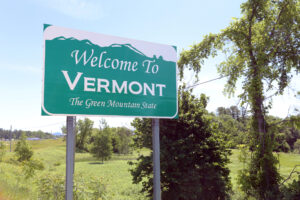
Vermont bill looks to set minimum labor rate for repair facilities
By onBusiness Practices | Insurance | Legal
A Vermont bill would set a minimum reimbursement hourly labor rate for repair facilities that will apply to first- and third-party vehicle insurance claims.
The bill, H384, states the Commissioner of Financial Regulation will investigate labor rates paid by vehicle insurance companies in the state and compare those rates with average rates in other New England states. Other data, including national data, may be reviewed as well, the bill says.
“The rate shall be a fair and reasonable amount that takes into consideration prevailing competitive prices,” the bill says. “In addition, the Commissioner shall establish a formula for annually adjusting the minimum labor rate based on the Consumer Price Index published by the U.S. Bureau of Labor and Statistics.”
A higher rate could be negotiated by a claimant taking into account the vehicle type, body composition materials, labor type, required labor expertise, training, certifications, equipment, and geographic area of the chosen repair shop, the bill says.
“An insurer shall not refuse to negotiate on the basis of its ability to obtain a price that it can secure from another licensed repair facility conveniently located to the claimant,” the bill says.
The bill was introduced Feb. 26 by Rep. Kevin Christie (D-6). It was referred to the Committee on Commerce and Economic Development.
The Vermont Department of Financial Regulation (DFR) held a meeting in September for consumers to gather information for a study into the business practices of auto insurance companies in the state.
The study is the result of a Vermont law passed in 2023 that requires the department to investigate and make recommendations regarding auto insurance in the state. Part of the study’s focus was to be on whether a minimum labor reimbursement rate should be established.
During the meeting, Mike Parker, former owner of Parker’s Classic Auto Works, said it would be difficult to understand the complex issue within the time allotted by the DFR.
“If you are not careful, you will cause more chaos,” Parker said. “If you set a minimum labor rate for the body shop, that will become a maximum pay rate. It will be the end-all.”
Bret Hudson, owner of Hudson’s Auto Body and an auto body repair instructor at Stafford Tech Center in Rutland, said currently, the labor rate in the auto collision repair field is too low.
The current rate doesn’t draw quality candidates into the field, keep up with changes in the industry, or account for the greater knowledge needed of electronics or ADAS systems.
He said automotive techs in the state are paid twice as much as auto body professionals despite tools and necessary expansive knowledge and training that are comparable.
Consumers are left responsible for short payments made by insurance companies that don’t cover a full labor rate, he said.
Hudson said the state also needs to address “aftermarket parts and customers being forced to accept knock-off parts rather than OEM parts that are better quality, fit the vehicle properly, and are cheaper and easier to install.”
IMAGES
Photo courtesy of wellesenterprises/iStock
